Titanium: White, Light & Strong
Titanium’s unique properties – strength, durability, and lightweight structure – make it a vital material across diverse industries. Titanium minerals such as ilmenite, rutile, and anatase are essential sources of titanium dioxide (TiO₂), a critical ingredient in pigments, coatings, and plastics.
Titanium Minerals
- Ilmenite: The most abundant but lowest-grade titanium mineral is widely used due to its availability.
- Rutile and Anatase: Prized for their high titanium content, with anatase being highly valued in specialised applications like photo-catalysts. Significant deposits of anatase are rare and highly prized.
Market growth is driven by rising demand from industries such as construction, automotive, and consumer goods. Key producers include Australia, South Africa, and Canada. Challenges include supply chain disruptions, environmental regulations, and geopolitical factors affecting mining operations and export dynamics while sustainable practices are an increasingly important attribute.
Titanium Metals Market

Supply Dynamics:
Production is energy-intensive, with major producers including China, Japan, and Russia. Geopolitical tensions and mining regulations impact raw material availability.

Demand Dynamics:
Demand is driven by aerospace, defence, medical, and industrial applications. The aerospace sector, the largest consumer, is a significant driver of market trends. Emerging applications in energy and electric vehicles are boosting demand, while price sensitivity influence market equilibrium.
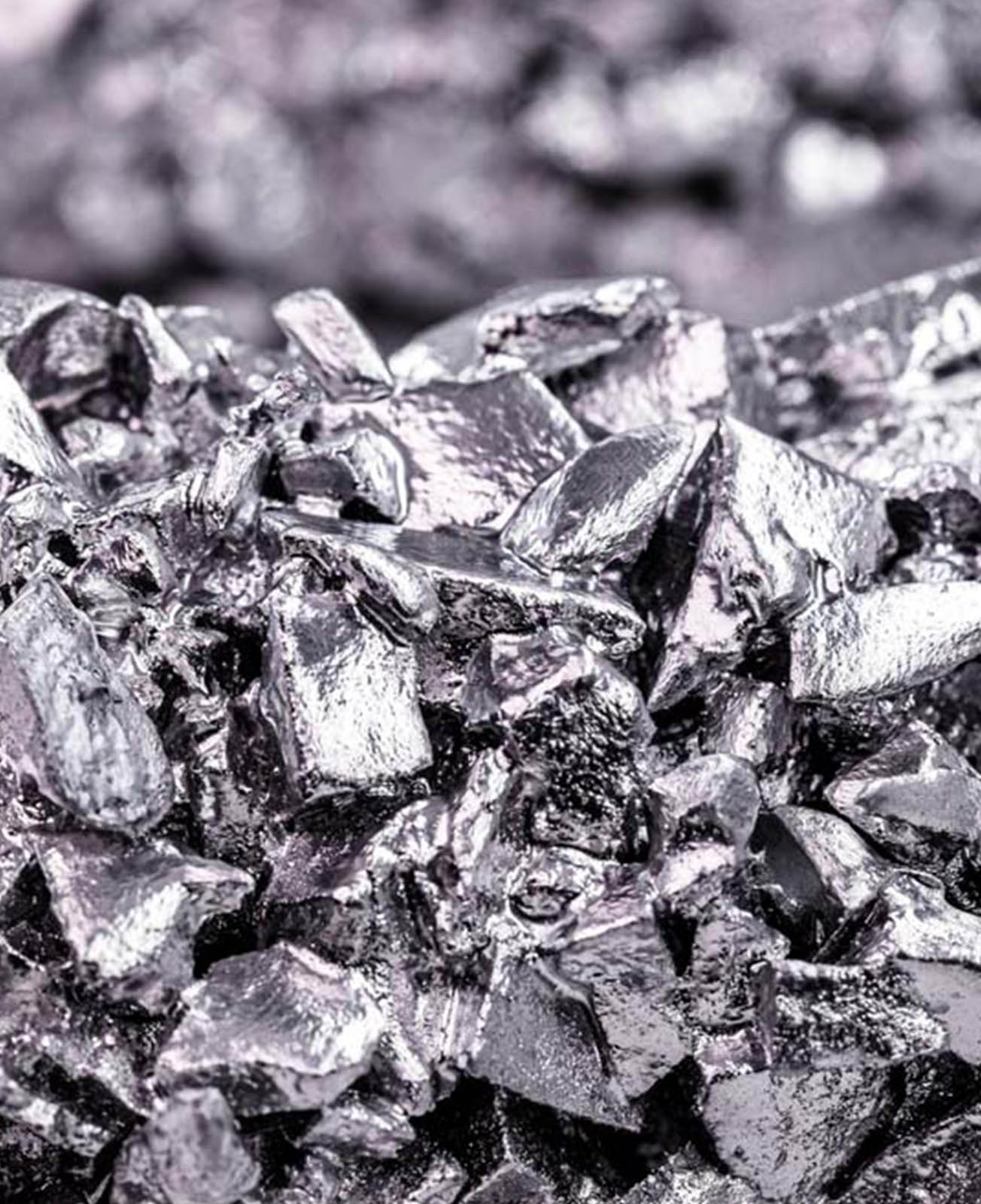
Titanium recycling:
Titanium recycling is challenging due to the high costs and strict material specifications requirements. Even small impurities can cause defects, making recycling challenging across applications.
Titanium Dioxide Market
Approximately 90% of the global titanium demand is for titanium dioxide (TiO2), with around 66% utilised as a brightening pigment in paints, plastics, and paper. This segment holds the largest share of the titanium dioxide market and continues to experience steady growth.
The titanium dioxide market is on a strong growth trajectory as forecast by ReAnIn Research Analysis and Insights:

$ 0 B
2023 Market Value (USD)

0 %
Expected compound annual growth (2023-2030) CAGR

$ 0 B
Projected 2030 value (USD)
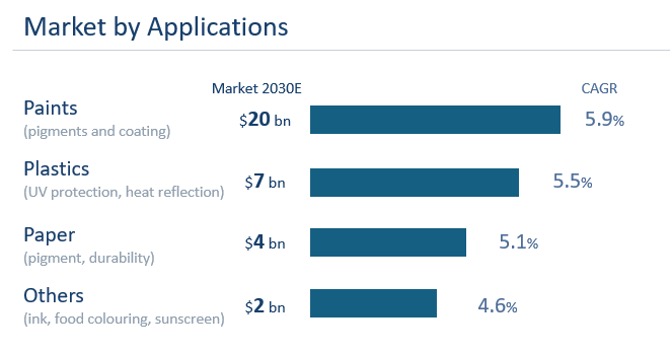
Sources:
ReAnIn Global Titanium Dioxide (TiO2) Market Global Industry Insights, Trends, Outlook, and Opportunity Analysis, 2020-2030
Titanium Pigment Market
The supply and demand dynamics of the titanium dioxide (TiO₂) pigment market are influenced by industrial applications, raw material availability, and economic trends.
- Supply Dynamics: TiO₂ is primarily sourced from ilmenite, rutile, and anatase minerals. Its production is concentrated in regions like Australia, South Africa, and China, with Brazil emerging as a producer. Supply can be constrained by mining limitations, environmental regulations, and geopolitical issues affecting raw material exports.
- Demand Dynamics: Demand for TiO₂ pigments is driven by their use in paints, coatings, plastics, paper, and cosmetics due to their brightness, opacity, and UV resistance. The construction and automotive sectors are key consumers, with demand closely tied to economic cycles. Emerging markets are contributing to rising consumption, while sustainable practices and cost sustainability can impact purchasing behaviour.
Market growth is driven by rising demand from industries such as construction, automotive, and consumer goods. Key producers include Australia, South Africa, and Canada. Challenges include supply chain disruptions, environmental regulations, and geopolitical factors affecting mining operations and export dynamics while sustainable practices are an increasingly important attribute.
Emerging Applications for Titanium
Titanium’s exceptional properties place it at the forefront of innovation, driving its adoption across emerging markets and groundbreaking applications:

Energy Storage and Batteries:
Titanium-based compounds are being explored for lithium-ion and sodium-ion battery anodes, enhancing energy density and lifespan.
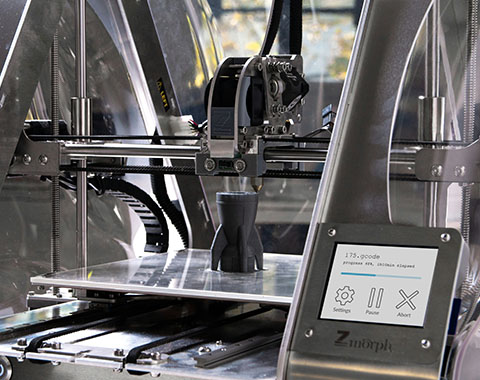
Additive Manufacturing (3D Printing):
Titanium powders are increasingly used in 3D printing for aerospace, medical implants, and custom components, offering lightweight, high-strength solutions.
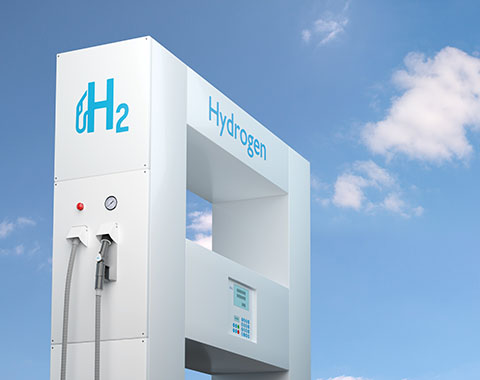
Hydrogen Economy:
Titanium alloys are used in hydrogen storage tanks, pipelines, and electrolysers due to their corrosion resistance and lightweight properties.

Wearable Tech: :
Titanium’s biocompatibility and durability make it ideal for smartwatches, fitness bands, and medical wearables.
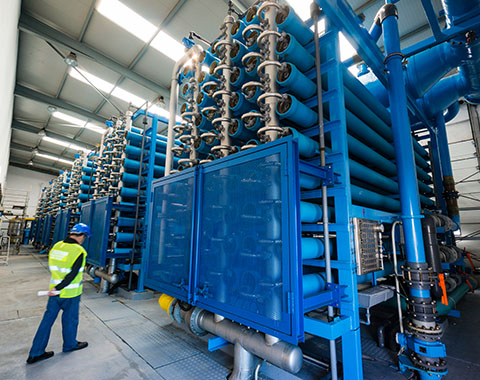
Marine Applications:
Titanium is gaining traction for offshore structures and desalination plants due to its resistance to saltwater corrosion.

Automotive and EVs:
Lightweight titanium components are being adopted in electric vehicles to improve efficiency and range.

Sustainable Architecture:
Titanium cladding and panels are used for eco-friendly, durable building designs.